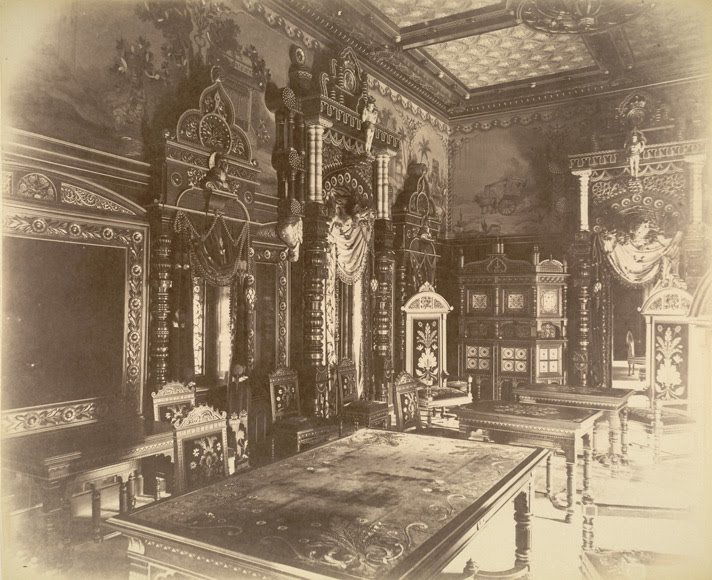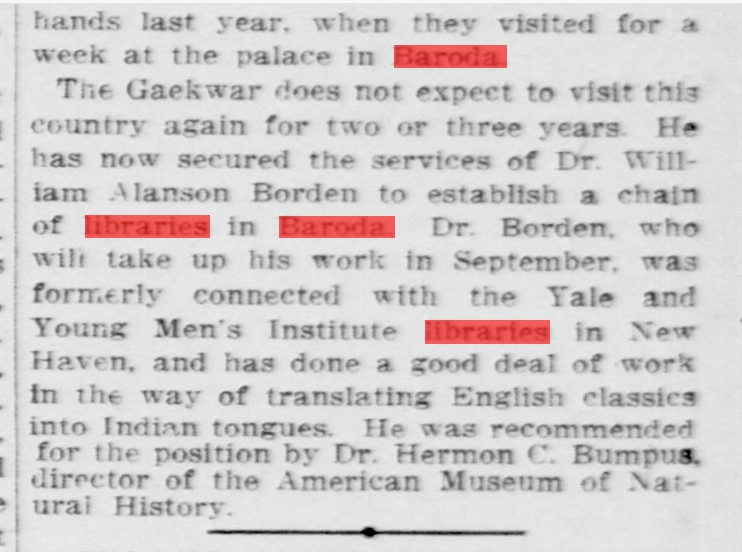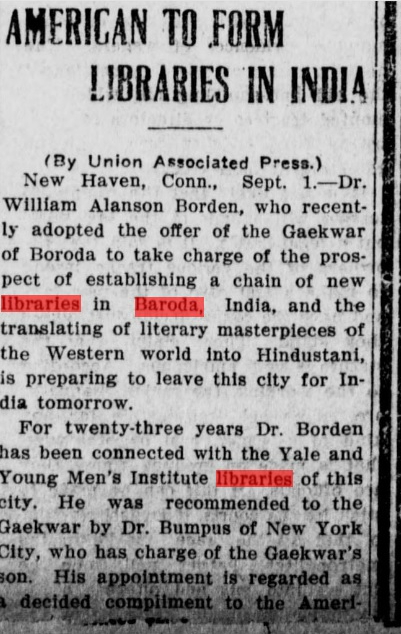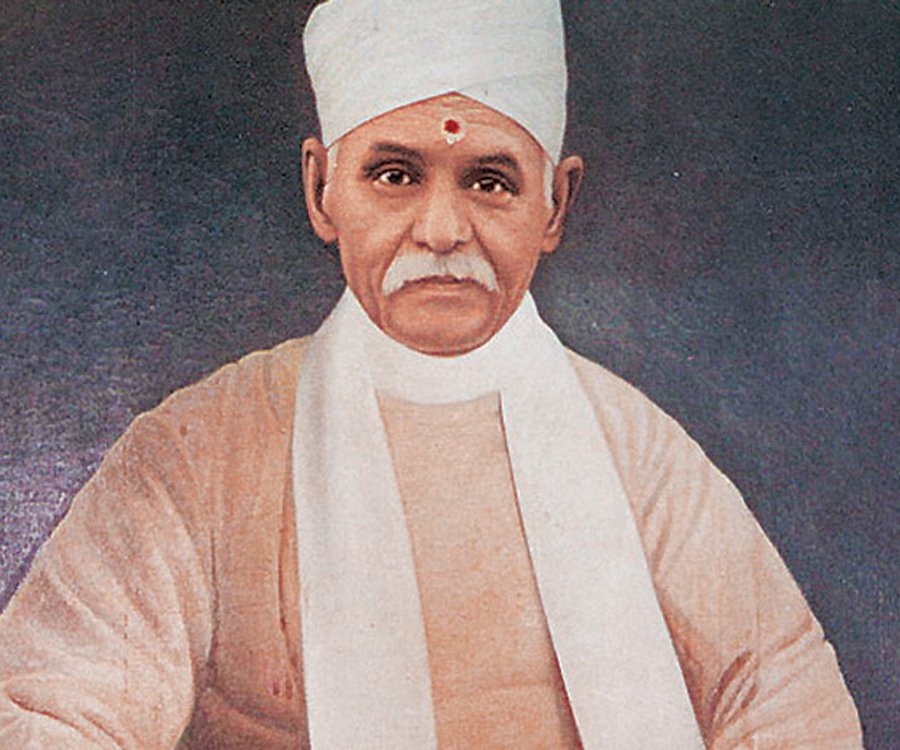Maharaja Sayajirao Gaekwar – Father of Modern Indian Library Movement
Written by : Amita Roy
Dated: March 02,2018
Share
Maharaja Sayajirao Gaekwar of Baroda
Education is considered as one of the most fundamental and basic rights to establish the liberty, equality and fraternity among human beings. The purpose of using education as a tool is to increase the knowledge of an individual and expand the outlook, opinion, freedom, mental horizon of an individual. Though mother Nature through experiences impart knowledge within an individual, but since the dawn of recorded human civilizations, convention had been and still now that knowledge can only be imparted through academic literacy in the form of books to everyone, rich or poor. As the number of middle class and under privileged outnumbers the rich, hence access to mediums to increase knowledge is also limited for them, despite having curiosity and quench of knowledge. The only way that this thirst for knowledge can be dealt with is by establishing libraries full of books in every neighborhood, academic institutions and donating books. The entry to these libraries should be free and universal for all. Hence a network of public libraries is required to establish.

Baroda State Library at Baroda, Gujrat.
In India, Goddess Saraswati is worshiped as a symbol of worshiping education and knowledge. Therefore, worship of sharing knowledge and its importance has been regarded foremost. From the days of Indus Valley civilization till today, there had been records that alphabetical literacy is as old as the recorded history. Though the script of Harappa is yet to be deciphered, but the idea of sharing knowledge was certainly there. Till the invention of printing technology and its arrival in India, knowledge on various subjects was recorded on hand written papyrus scrolls. It was until the arrival of British that the public distribution of knowledge through printing medium was not taken seriously.
The library movement of India can be divided into 3 phases – ancient, medieval and modern. Library movement in modern India started from the early 20th century and still shaping according to change and introduction of new technologies. But if anyone can be credited of making knowledge accessible to one and all without any prejudice, it should be Maharaja of Baroda Sayajirao Gaekwar III. Born as Gopalrao Gaekwar of Kaulane, he was a distant off shoot of the ruling Gaekwar family of Baroda. Till the age of 12 years, he spent an ordinary village boy’s life that didn’t have much access to education or worldly knowledge. He was adopted by Maharani Jamnabai Gaekwar as her son and future king of Baroda. Before he was reinstated on throne at the age of 18 years, he went through a rigorous training and education under the direct guidance of the British Crown who appointed F. A. H. Elliot as his European tutor and Dewan Raja Sir T. Madhava Rao. The knowledge that he absorbed from this cosmopolitan education helped him to become a benevolent ruler and efficient administrator. He understood that knowledge, bookish, theoretical, practical or otherwise is very important to penetrate every strata of the society without any discretion for the long term benefit of the state.

Private library reading room at Lakshmi Vilas Palace in Baroda.
Baroda already had a state library built in the 19th century but it was effective as it would have been for the general Baroda public. As Sayajirao was trained and molded by the best of Indian and English education, he understood that universal literacy is utmost important with an accessible network for sharing of knowledge. Sayajirao was a curious student and a thirsty traveler. From 1880’s onwards, he had already started traveling to England and Europe. He observed the differences of delivering education in both India and the West. He tried to understand how to develop spontaneous lifelong curiosity about knowledge in his subjects. Sayajirao sent his eldest son Fatehsinhrao to England for best of education. He also ensured that the females in his family are well educated in modern education.

News printed in American newsppers in 1910 stating Sayajirao Gaekwar hiring Bordman as Director of Baroda State Library.
Sayajirao always had an unknown attraction towards the New World which we know today as Americas. From 1890s onwards, he had been regularly visiting USA. But two of his specific visits to the country created a lot of media hype and press coverage throughout America and the entire world, even in the early 20th century when media was not as prominent as today. In 1906, Sayajirao went to USA along with his wife Maharani Chimnabai Gaekwar and his younger brother cum secretary Prince Sampatrao. Though he was particularly interested in getting his second son Jaisinhrao admitted at Harvard in the 1906 trip, he also wanted to study the academic system in USA which created centers of Excellence like Harvard, Berkeley, Princeton, and Cornell. The trip of 1906 was of 2 months duration. As a desirous student and observer who wanted to acquire knowledge which will aid in making Baroda a model state, he visited New York, Washington DC, Philadelphia, Harvard, Chicago, Colorado. He impressed the American press by the progress of education in his state Baroda where he already had established a men’s college, a women’s university and a technical school. He was very impressed by the collection of books kept at the Congressional library in Washington DC.

William Alanson Bordman accepting the post of joining as Director of Baroda Sate Library in 1910. The Hattiesburg News, 01/09/1910.
Sayajirao again made a trip to USA and this time, it was via Far East, Japan, Pacific and Canada with his wife, brother and now also his daughter Indira Raje. By the time of this trip that he made to USA, he understood the basic importance of primary education. Sayajirao introduced compulsory free primary education for all his subjects without any discretion and decided to establish a network of public libraries in his state which will be free for all. Thus this was the first modern public library system in India which was initiated by an educated far sighted Maharaja who single handedly pioneered it. In 1910, during his visit to USA, he appointed William Alanson Borden, a pupil-assistant of Charles A Cutter who worked as a Librarian for Young Men’s Institute, Connecticut to come and establish library services in Baroda. Borden accepted the invitation and came to Baroda in November, 1910 as the Director of Baroda State Libraries. He found out that there were 241 libraries in Baroda with more than 1 lakh volumes. He introduced a proper library management scheme which was green signaled by Sayajirao Gaekwar and it started implementing from 1911. The scheme established a network of free public libraries consisting of a state central library, 4 district libraries, 45 town libraries and more than a 1000 village libraries including mobile libraries under one integrated chain system. Within 2 decades, 85% of the population of Baroda had access to libraries. Borden also introduced the first public library school in India to train future librarians in 1911. He worked as a Director till 1913.
.jpg)
Janardan Kudaldas replacing Bordman as the second Director of Baroda State Library in 1914.
Besides pioneering the first modern public library network in India, Sayajirao Gaekwar also donated 1 lakh Rs to build Gaekwar library at Benaras Hindu University in Varanasi to Pt Madan Mohan Malviya.

Pandit Madan Mohan Malviya. Wikimedia
